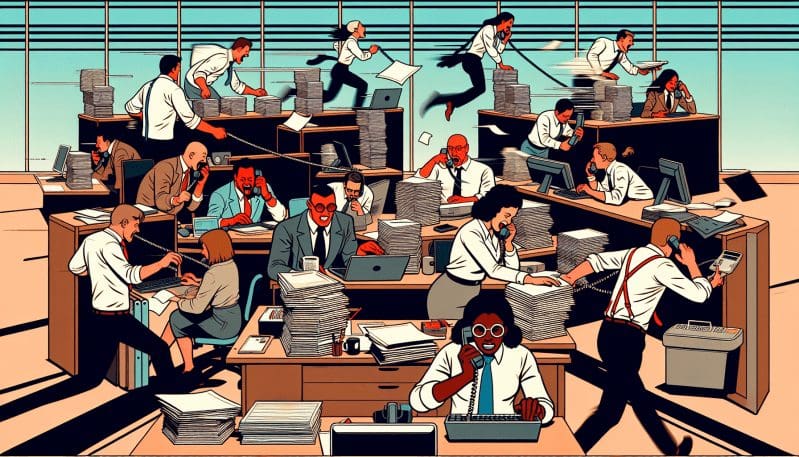In the landscape of modern employment, a silent cult has emerged—one that worships at the altar of hyper-productivity. The creed is simple: Do more, faster, and better. Yet this fervent push towards relentless productivity has seeped into every pore of the working world, often extolled as the quintessential goal for both laborer and corporation. However, beneath its lustrous veneer lies a host of repercussions, a trail of burnout, diminished job fulfilment, and a plethora of mental health challenges that are often overshadowed by the glowing reports of fiscal triumphs.
The origins of the hyper-productivity movement are as complex as they are nuanced. The digital revolution has redrawn the boundaries of the workplace, blurring the lines between personal and professional life. Thus, the stage was set for a new ethos, one that equated constant activity with success and idleness with failure. But at what cost?
Organizational psychologists are increasingly sounding the alarm on the unsustainable nature of this trend. Studies and workplace surveys reveal a grim picture: Employees report feeling the strain to perform at superhuman levels, often at the expense of their health and well-being. The mantra of ‘more’ has not only diminished the quality of work but also the quality of life for countless individuals. The fallout is tangible—higher turnover rates, increased medical leave, and a workforce grappling with anxiety and depression.
The glorification of ‘busyness’ has engendered a culture where time off is oft seen as time wasted. The irony is palpable; in the race to be productive, we’ve become counterintuitively less so. The quality of output is marred by errors, creativity stifled by exhaustion, and innovation stymied by the fear of taking risks that may not yield immediate results.
In the eyes of experts, the solution lies in fostering a more balanced approach to work—one that values quality over quantity, health over haste, and sustainability over speed. But the road to such a paradigm shift is fraught with institutional inertia and cultural resistance.
What can be done? Organizations must take the lead in redefining what productivity truly means. This can include implementing policies that encourage regular breaks, promoting flexible work arrangements, and celebrating a diversity of working styles. Crucially, there must be a dismantling of the stigma surrounding mental health, with resources and support systems made readily available for those in need.
As first-hand accounts from employees attest, the longing for a more balanced approach to work is palpable. It’s time to challenge the cult of hyper-productivity, to unshackle ourselves from the untenable pace it demands, and to chart a course towards a work environment that prioritizes the well-being of its people as the true measure of success.
The shift is not just about being ‘less busy,’ but about being purposefully engaged. It’s about understanding that in the grand equation of work, worker, and workplace, the most valuable variable is, after all, the human element. And it’s about recognizing that when we take care of our workforce, they, in turn, take care of business.
To our readers who mirror the erudition and diversity of thought found in the readership of the Washington Post, The New Yorker, and The New York Times, we invite you to reflect on these insights, share your experiences, and join in the conversation about shaping a future where productivity and well-being harmoniously coexist.




























